Other names for this scale C major, D dorian, E phrygian, F lydian, G mixolydian, B locrian Other melodic scales A melodic minor (ascending) Other minor scales A pentatonic minor, A natural minor, A harmonic minor, A melodic minor (ascending)The G sharp Melodic Minor scale consists of seven notes These can be described as intervals, as seminotes or steps on the guitar fingerboard, written as 2 1 2 2 2 2 1 from the first note to the next octave This scale has an unusual aspect it ascends as described above but descends as the Natural MinorNotes in the G melodic minor scale Ascending G, A, B♭, C, D, E, F♯

File G Sharp Melodic Minor Scale Ascending And Descending Png Wikimedia Commons
How to use the melodic minor scale
How to use the melodic minor scale-The harmonic minor scale is so called because in tonal music of the common practice period (from approximately 1600 to approximately 1900) chords or harmonies are derived from it more than from the natural minor scale or the melodic minor scale The augmented second between its sixth degree and its raised seventh degree (the leading tone), traditionally considered undesirable in melodicIn music theory, the term minor scale refers to three scale patterns – the natural minor scale (or Aeolian mode), the harmonic minor scale, and the melodic minor scale (ascending or descending) – rather than just one as with the major scale




The Minor Scales Music Theory Academy
Descending G, F, E♭, D, C, B♭, A Scale Formula Ascending W, H, W, W, W, W, H Descending W, W, H, W, W, H, W W Whole Step, H Half Step G melodic minor scale notes on piano Ascending Descending Your browser does not support the audio elementMelodic Minor Scales I like to think of the melodic minor scale as the chameleon scale as it changes its colours The ascending scale creates more tension by sharpening the sixth and seventh steps, and the descending scale relaxes that tension byNotes in the Gsharp melodic minor scale Ascending G♯, A♯, B, C♯, D♯, E♯, F𝄪 Descending G♯, F♯, E, D♯, C♯, B, A♯ Scale Formula Ascending W, H, W, W, W, W, H Descending W, W, H, W, W, H, W W Whole Step, H Half Step Gsharp melodic minor scale notes on piano Ascending Descending Your browser does not support the audio element
Melodic Minor Scale lookup on Mandolin notes G♯, A♯, B, C♯, D♯, F, G aka Jazz Minor, Gauri Manohari other names A♭G Flat Melodic Minor Scale G Melodic Minor Scale Ascending G Melodic Minor Scale Piano Two Octave G Melodic Minor Scale G Melodic Minor Scale Bass Clef G Melodic Minor Scale Descending Bass Clef G Sharp Melodic Minor Scale Gminor Melodic and Harmonic Scales G Melodic Minor Scales Dual Octave G Melodic Minor Scale Treble Clef G Melodic Minor Scale Treble 4Time G Melodic Minor Scale Trumpet GMelodic Minor Scale The melodic minor scale raises the 6th and 7th notes of the natural minor scale when you are playing in ascending order When the melodic minor scale is played in descending order, the notes of the scale are same as the natural minor
Seven notes make up the melodic minor scale, each spaced either one or two semitones apart from one another However, the spacing between the notes depends upon whether the scale is ascending or descending Here is each degree of the ascending melodic minor scale First scale degree the root of the scale Second degree a whole step up fromWhat is the melodic minor scale Let's dive deeper into Intervals and figure out what the scales are Scales are a selection of notes, out of the chromatic scale (12 notes) They are constructed using steps The relative steps of the melodic minor scale are whwwwwh (w=whole step, h=half step) Let's explore how that exactly worksA G melodic minor scale Be sure to listen to Example 3 carefully, and notice that the half and wholestep pattern of the melodic minor form of the minor scale is not the same ascending and descending In its descending form, the melodic form of the minor scale is the same as the natural form of the minor scale



Jazclass Jazz Scales Lesson Melodic Minor Scale In All Keys




The Minor Scales Music Theory Academy
In Classical music, you play the 'true' melodic minor scale ascending and the natural minor scale descending But in Jazz, we play the 'true' melodic minor scale both up and down, and call it the Jazz Melodic Minor Scale The associated chord is the CmMaj7 chord –This step shows the ascending G melodic minor scale on the piano, treble clef and bass clef It also shows the scale degree names for all 8 notes The G melodic minor scale has 1 flat, 1 sharp This melodic minor scale is based on the natural minor scale with the same key / tonic note G natural minor scaleStart studying Melodic Minor Scales (ascending) Learn vocabulary, terms, and more with flashcards, games, and other study tools



Untitled



1
This step shows the ascending Gsharp melodic minor scale on the piano, treble clef and bass clef It also shows the scale degree names for all 8 notes The Gsharp melodic minor scale has 5 sharps, 1 doublesharp This melodic minor scale is based on the natural minor scale with the same key / tonic note G# natural minor scaleMinor scales are as old as Western music itself All styles of music use minor scales to produce melodies, riffs, and chord progressions Minor Scale Guide Natural, Harmonic, and Melodic Minor Scales 21 MasterClassThe ascending melodic minor scale is one of the three traditional minor scales It is constructed with a W–H–W–W–W–W sequence of wholesteps (W) and halfsteps (H) In the key of C that would give us C–D–Eb–F–G–A–B or 1–2–b3–4–5–6–7 as shown in Ex 1 Other ways to wrap you brain around it could be a simple




File G Sharp Melodic Minor Scale Ascending And Descending Png Wikimedia Commons




Minor Scales Part 3 Melodic Minors Youtube
Scale Positions You'll find below the 5 different positions/shapes of the G Melodic minor Uke scale in DTuning (ADF#B), along with their ascending tab patternsIf you want to convert your entire major modal system to a melodic minor one, raise the root a half step G IONIAN as is G A B C D E F# G With the root raised a half step G# A B C D E F# G# You are now in the A melodic minor system That's itThe ascending form of the A melodic minor scale is shown below The sixth and seventh degrees of the natural minor scale are raised so that F and G become F# and G# Descending Scale The descending version of the scale contains the same notes as the natural minor scale, so F# and G# are lowered to F and G




Weekly Workout Building Colorful Chords From The Harmonic And Melodic Minor Scales Acoustic Guitar




What Makes The Melodic Minor Scale So Melodic Premier Guitar
The melodic minor scale is a seven note scale The melodic minor scale is almost the same as the natural minor with two exception that the sixth and seventh tones are raised by a semitone when the scale is ascending When the scale is descending, the melodic minor is the same as the natural minorThe melodic minor scale is the same as the natural minor with the exception that the sixth and seventh tones are raised by a semitone (half step) when the scale is ascendingThis video demonstrates how to calculate melodic minor scalesIt is advisable that viewers watch part 1 initially as this video expands on the concepts discu




Melodic Minor Scale Harmonization With Guitar Diagrams
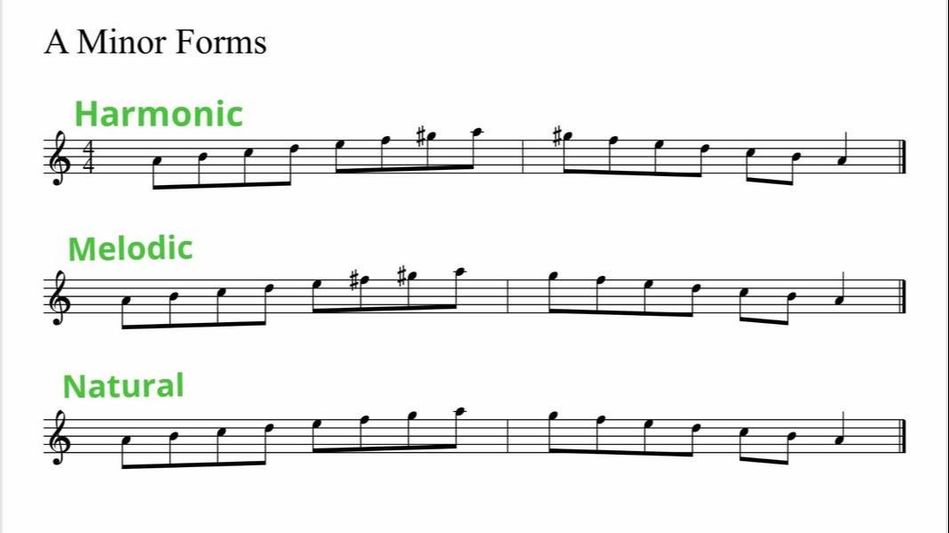



Relative Majors And Minors How To Work Out Minor Scales On The Piano Ruth Pheasant Piano Lessons
Melodic minor scale The melodic minor scale is the same as the natural minor scale with the exception that the sixth and seventh tones are raised by a semitone ( half step) when the scale is ascending When the scale is descending, the melodic minor is the same as the natural minor, eg See more about modern scale construction in the AppendixBig list of common triads and four note chords of the scale G Melodic MinorCheck out the A melodic minor scale sidebyside with the A natural minor scale A melodic minor scale A natural minor scale Keep in mind that what we just learned is the ascending form of the melodic minor scale The melodic minor scale has a different descending scale form and we'll be talking about it in the next segment
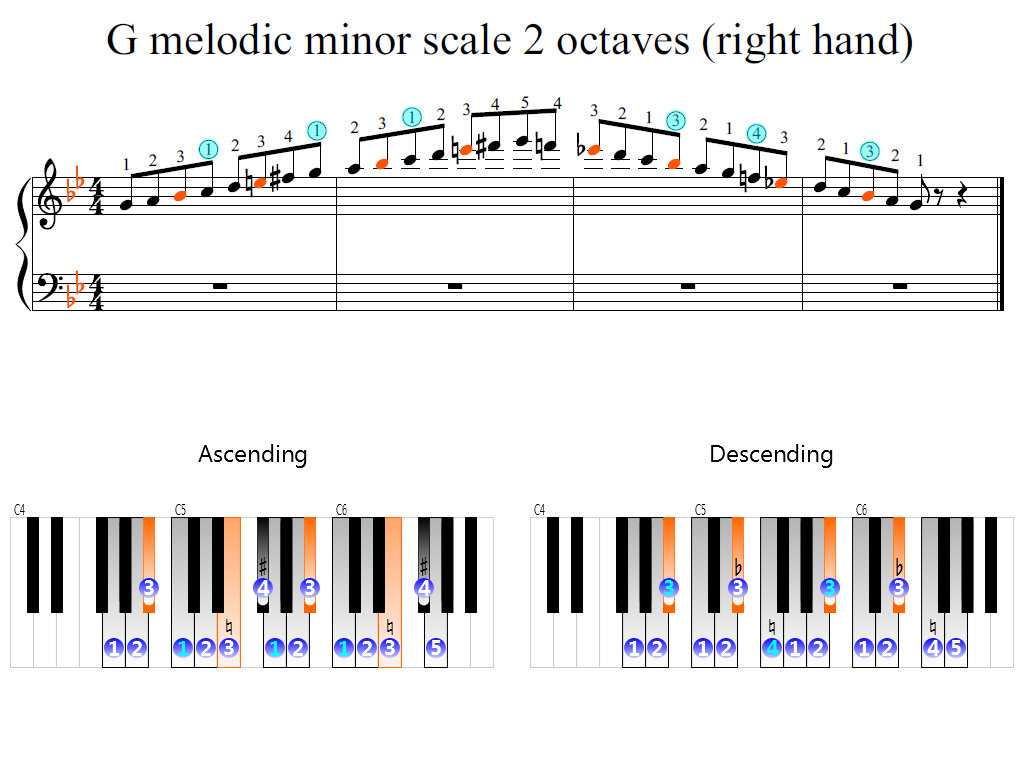



G Melodic Minor Scale 2 Octaves Right Hand Piano Fingering Figures




Section 7 7 The Melodic Minor Modes Offtonic Theory
Scale 2733 Melodic Minor Ascending Bracelet Diagram The bracelet shows tones that are in this scale, starting from the top (12 o'clock), going clockwise in ascending semitonesThe melodic minor is used when ascending the scale, the natural minor is used when descending the scale Audio 3 In the past the semitone downward step from tonic to 7th (C B) was considered too harsh a sound for a minor mood Therefore the whole tone step from tonic to b7th (C ) was used The combined scales are called the 'melodic minor scale'In jazz, only the ascending form of the scale is termed as melodic minor In Indian Carnatic music, this melodic minor scale corresponds to the Raga Gourimanohari




Why Do The Notes Of Melodic Minor Scale Change When You Play It In Descending Order Music Practice Theory Stack Exchange




Study Keys Level 2
A Melodic Minor Scale Key Signature A Melodic Minor scale key signature consists of 2 accidental(s) F♯ G♯ Notes Information presented in this and the following sections refer to the ascending form of the melodic scaleThe Ascending Melodic Minor Scale Something that is important to note about the ascending version of the melodic minor scale, is that it shares exactly 6 unique notes with the major scale and only 5 unique notes with the natural minor scale For example, the ascending melodic minor scale shares the notes A, B, D, E, F#, and G# with the A majorHere are the G Minor Scales the natural minor scale, the melodic minor scale, and the harmonic minor scale Fingerings are included Learn the scales ascending and descending First, try one octave, and then try two octaves (Eventually, you should be able to play each scale with both hands, ascending and descending, four octaves)




Why Do The Notes Of Melodic Minor Scale Change When You Play It In Descending Order Music Practice Theory Stack Exchange



Jazclass Jazz Theory 18 Minor Scales
3 Melodic Minor Scale The Melodic Minor Scale is the same as the natural minor scale but with a chromatically raised sixth and seventh degree ascending and restored to its normal pitch descending (natural minor)The melodic minor scale is a seven note scale The melodic minor scale is almost the same as the natural minor with two exception that the sixth and seventh tones are raised by a semitone when the scale is ascending When the scale is descending, the melodic minor is the same as the natural minor Diagram scalesG Melodic Minor Scale Tonic The 1st note of the G melodic minor scale is G Major 2nd The 2nd note of the scale is A Minor 3rd The 3rd is Perfect 4th The 4th note is C Perfect 5th The 5th note is D Major 6th The 6th is E Major 7th The 7th is F# Perfect 8th The 8th note of the scale




Basicmusictheory Com G Melodic Minor Scale



1
The G melodic minor scale played ascending and descending with its notationThe natural accidentals inside the parentheses appear because they would be thereThe Melodic Minor Scale differs from the Natural Minor Scale by the sixth and seventh notes, which are raised one semistep This scale is kind of peculiar since it is sometimes played differently ascending and descending Jazz The sixth and seventh notes are always raised, exactly as the pictures below illustrate This is the most modernThe ascending A melodic minor scale is A, B, C, D, E, F#, G#, A, whereas the descending melodic minor scale is the same as the natural minor scale A, G, F, E, D, C, B, A The A Melodic Minor scale, ascending and descending, with intervals between each pitch notated as a W (wholestep) or h (halfstep)




Minor Scales Scale Degrees And Key Signatures Open Music Theory




Basicmusictheory Com G Melodic Minor Scale
The G Melodic Minor scale consists of seven notes These can be described as intervals, as seminotes or steps on the guitar fingerboard, written as 2 1 2 2 2 2 1 from the first note to the next octave This scale has an unusual aspect it ascends as described above but descends as the Natural MinorThe harmonic minor scale has the 7th sharpened to create a leading tone The melodic minor scale has both the 6th and 7th sharpened for a smooth (and convincing) ascent to the tonic On its way back down, it reverts back to the normal state (like the natural minor) Just for another example, here they are in GF minor In grade three music theory (ABRSM) you need to know two types of minor scales, the harmonic minor and the melodic minor The harmonic minor has the pattern TSTTS3SS (3S = 3 semitones) The melodic minor has one pattern on the way up and another on the way down Ascending (from bottom) TSTTTTS




Why Do The Notes Of Melodic Minor Scale Change When You Play It In Descending Order Music Practice Theory Stack Exchange




How To Play A Melodic Minor Scale Pianotv Net




G Minor Scale Music Theory




Music Crash Courses



Scales Clairnote Sn Music Notation



1




G Melodic Minor Scale Youtube



G Melodic Minor Scale C 01 Craypoe Productions
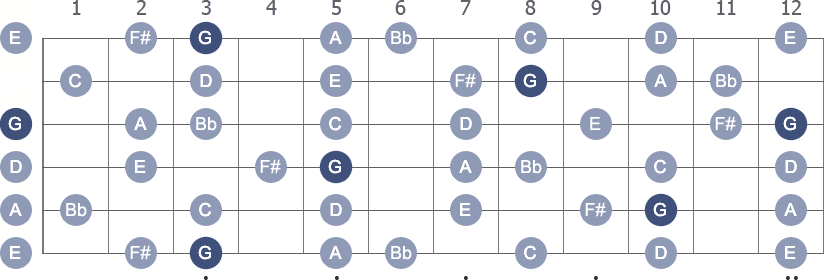



G Melodic Minor Guitar Scale




Minor Scales 2 And 3 Octave Transposable Patterns Jeffrey Goodman Music



The Melodic Minor Scale
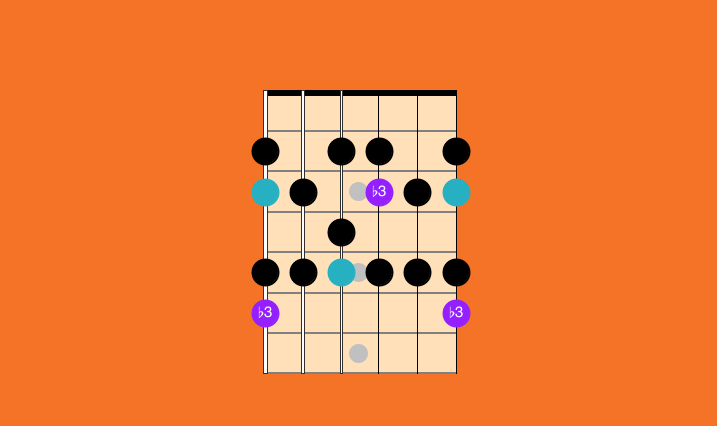



Melodic Minor Scale 5 Patterns Best Guitar Scales To Learn



Jazclass Jazz Scales Lesson Melodic Minor Scale In All Keys



The Minor Scales And Chords Portland Piano Lab



Scales Clairnote Sn Music Notation



Melodic Minor Scales Ascending Sheet Music For Piano Solo Musescore Com




Why Do The Notes Of Melodic Minor Scale Change When You Play It In Descending Order Music Practice Theory Stack Exchange




The Minor Scales Natural Harmonic And Melodic Hello Music Theory



Minor Scales Part 3 Melodic Minors Youtube




Music Theory For Producers Harmonic Field Creating Tracks
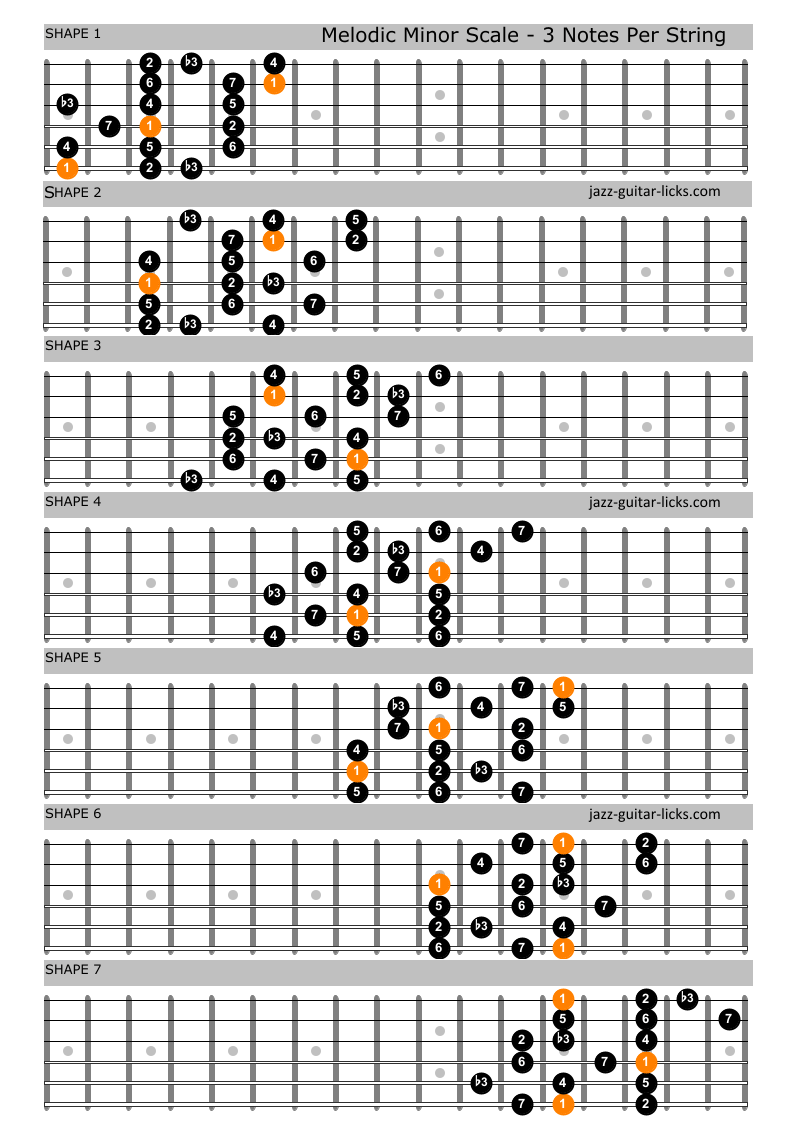



The Melodic Minor Scale Guitar Lesson Diagrams Theory



What Is The Formula For A Melodic Minor Scale Quora




File G Melodic Minor Scale Ascending And Descending Png Wikipedia




Melodic Minor For 8 String Scales Modes




Music Theory Page 2 The Cello Companion




Basicmusictheory Com G Flat Melodic Minor Scale




Finding Melodic Minor Scales On A Guitar Dummies




Basicmusictheory Com G Flat Melodic Minor Scale




What Makes The Melodic Minor Scale So Melodic Premier Guitar




Basicmusictheory Com G Flat Melodic Minor Scale




Minor Scales Scale Degrees And Key Signatures Open Music Theory




Melodic Minor Scales Shapes Patterns Theory Guitar Kitchen



Scales And Scale Degrees Open Music Theory



Soprano Recorder Scales G Melodic Minor Scale
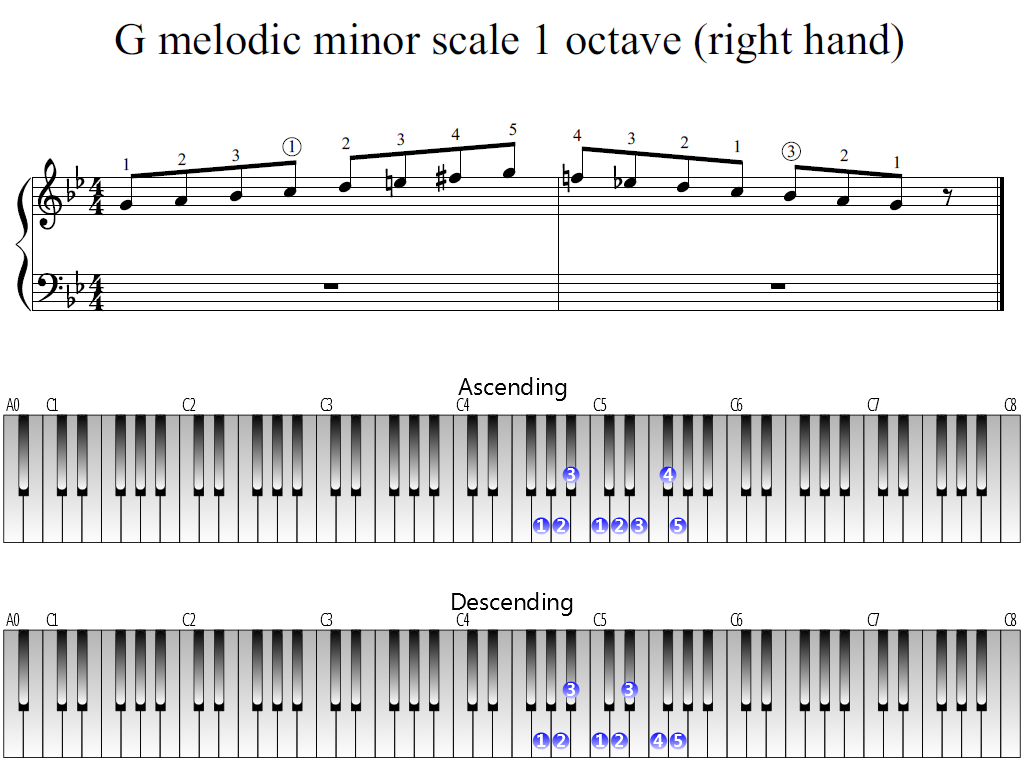



G Melodic Minor Scale 1 Octave Right Hand Piano Fingering Figures




Study The Minor Scale
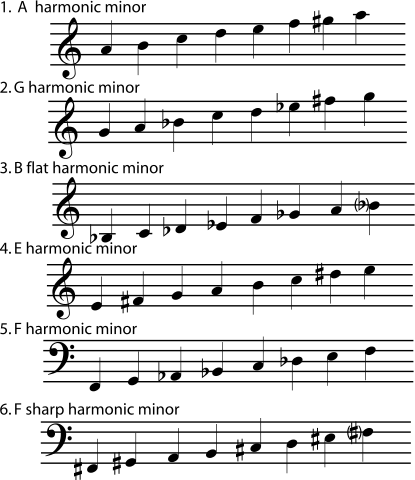



4 4 Minor Keys And Scales
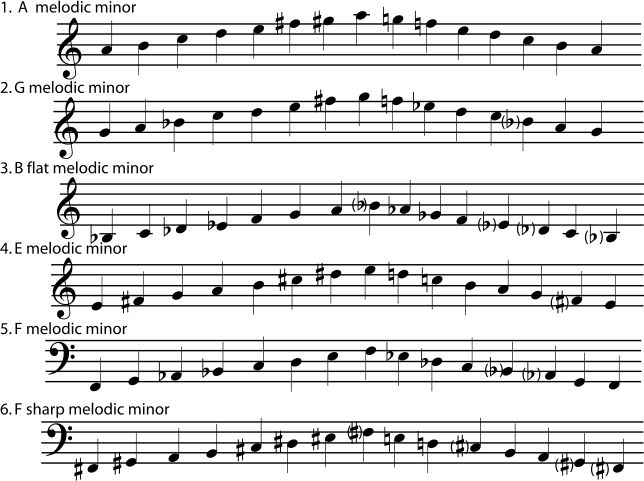



4 4 Minor Keys And Scales




Why The Ascending Form Of The Melodic Minor Scale Differs From Its Descending Form Hear And Play Music Learning Center




The Melodic Minor Scale Signature Sound
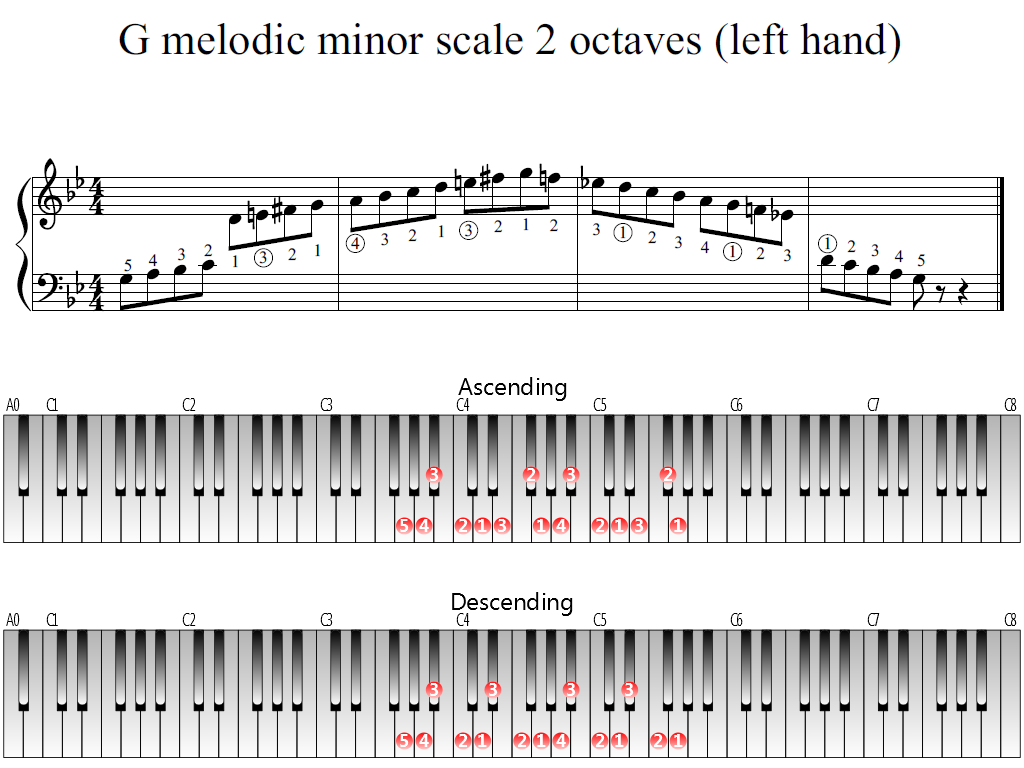



G Melodic Minor Scale 2 Octaves Left Hand Piano Fingering Figures




Basicmusictheory Com G Melodic Minor Scale




Melodic Minor Jens Larsen




Melodic Minor Scale Musipedia



Melodic Minor Scale Ricmedia Guitar




G Melodic Minor Scale Ascending Only Youtube
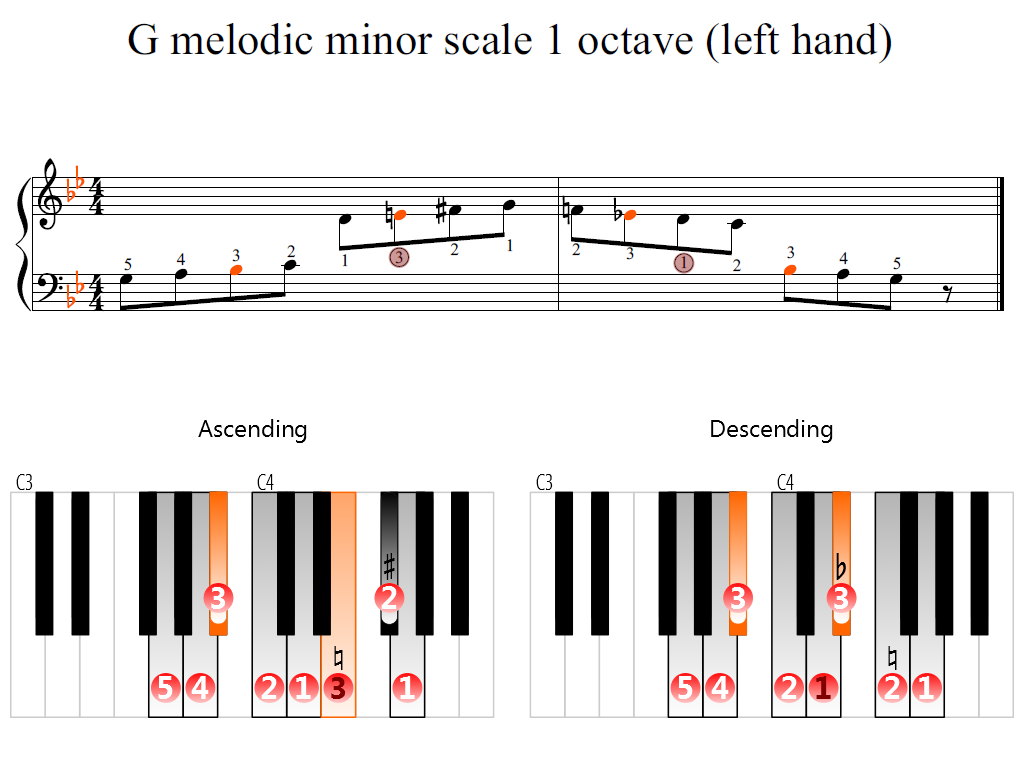



G Melodic Minor Scale 1 Octave Left Hand Piano Fingering Figures
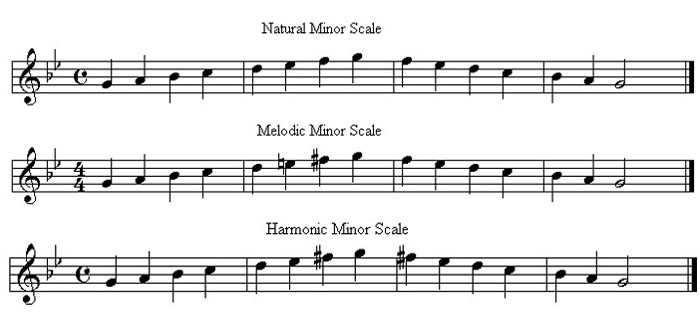



Natural Minor Scale




File G Sharp Natural Minor Scale Ascending And Descending Png Wikipedia




The Melodic Minor Scale And Modes Chapter 1 The Melodic Minor Scale And Its Pdf




Basicmusictheory Com G Flat Melodic Minor Scale




Music Theory Minor Scales



2




Scales Continued The Guitar Journal
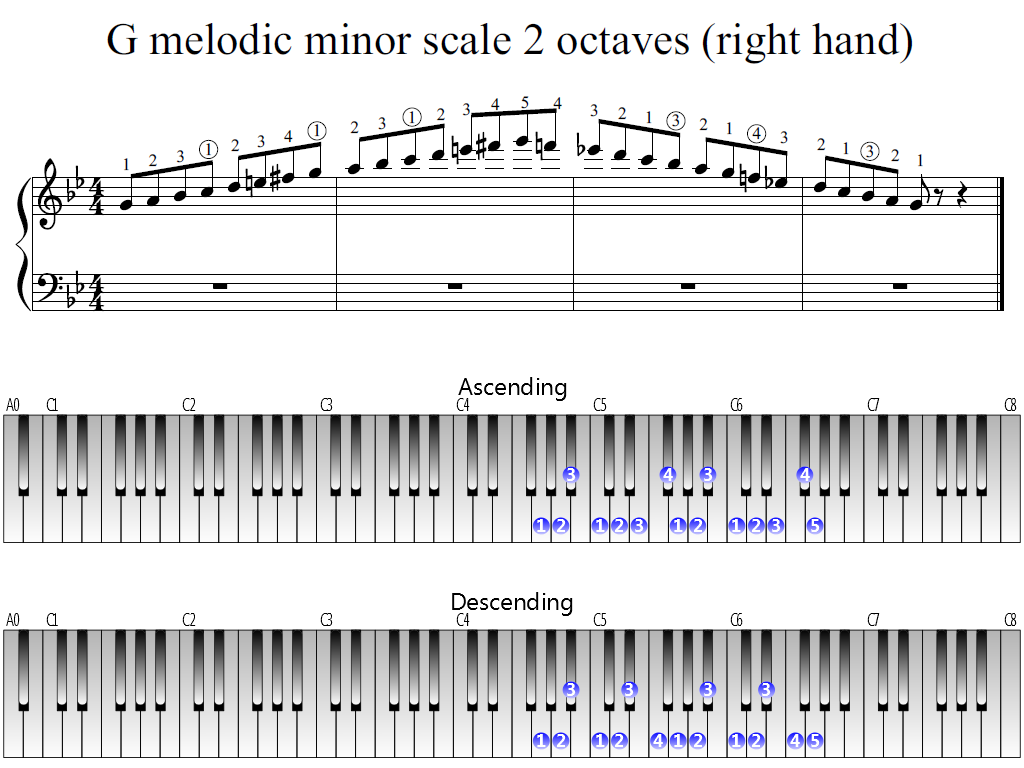



G Melodic Minor Scale 2 Octaves Right Hand Piano Fingering Figures




Guitar Practice Melodic Minor Scale Life In 12 Keys



Music Theory Scales And E Minor Scale



The G Minor Scale Natural Harmonic And Melodic Notes Chords And More




Theory Blog Melodic Minor Scale



G Sharp Melodic Minor Scale C 01 Craypoe Productions




Melodic Minor Scale Musipedia



2



The G Minor Scale Natural Harmonic And Melodic Notes Chords And More




Why Do The Notes Of Melodic Minor Scale Change When You Play It In Descending Order Music Practice Theory Stack Exchange




Basicmusictheory Com G Flat Melodic Minor Scale
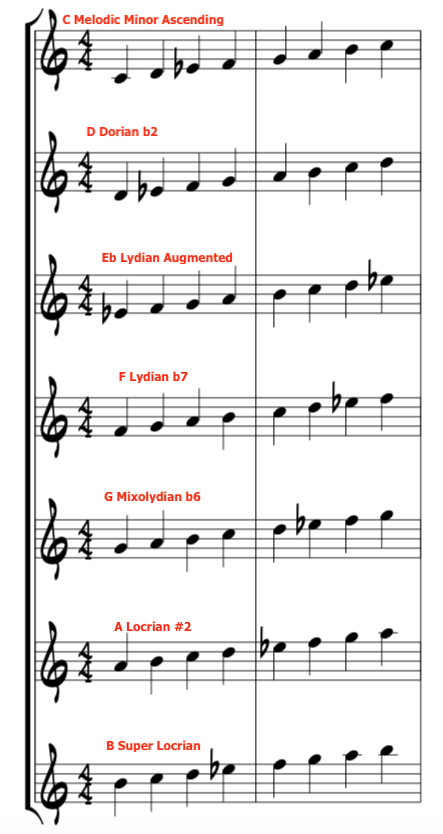



Modes Of The Melodic Minor Transposed To New Parent Key How To Making Music Theory And Jazz Improvisation Work For You




G Melodic Minor Scale
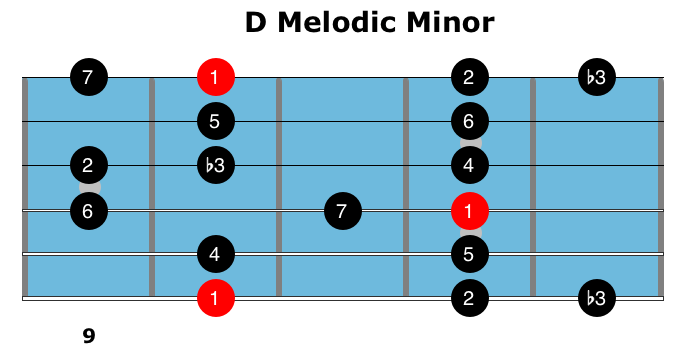



How To Use The Melodic Minor Scale




The Minor Scales Music Theory Academy




Melodic Minor Scales Shapes Patterns Theory Guitar Kitchen




Heptatonic Scales The Major Scale The Three Forms Of The Minor Scale




Basicmusictheory Com G Melodic Minor Scale




Melodic Minor Scale




Discover What Is The Famous Piano Scale All About Learn Piano Chords Pro




Basicmusictheory Com G Sharp Melodic Minor Scale



Untitled



G Melodic Minor Scale For Piano




Why Are There 3 Minor Scales School Of Composition



Why The Ascending Form Of The Melodic Minor Scale Differs From Its Descending Form Hear And Play Music Learning Center




Music Theory Minor Scales




08 Minor Scales And Key Signatures Music Student 101
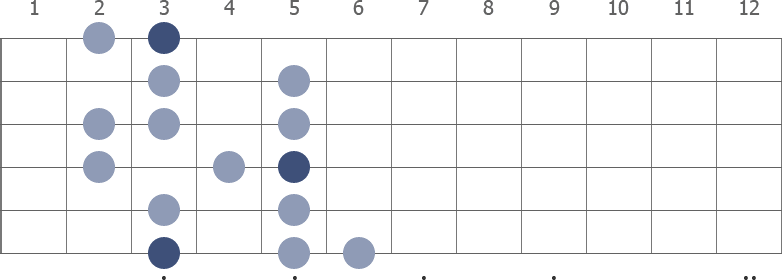



G Melodic Minor Guitar Scale



1




17 G Melodic Minor Ascending School Of Composition


